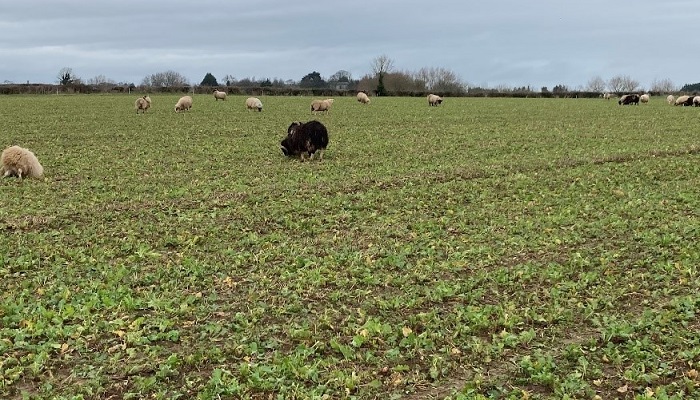22 August 2023
Catch crop grazing options limited

Changes introduced under Conditionality, specifically GAEC 6 – which aims to prevent/minimise soil erosion and soil degradation – will have knock-on effects on livestock farmers’ ability to graze catch crops on specialised tillage farms this winter.
The changes being introduced this year, as outlined in the Department of Agriculture, Food and the Marine’s Explanatory Handbook for Conditionality Requirements, include:
- Grazing catch crops in-situ – you must provide an adequate lie-back area which is always accessible to grazing livestock. The lie-back area must be grassland. The available lie back area must be at least equal in area to the adjacent non-grass forage area e.g., 5ha of kale will require at least 5ha of lie back.
- You must maintain a grass/vegetated buffer strip of at least 3m around the external perimeter of the parcel/area in catch crops (excluding external water boundaries – see next point).
- As per GAEC 4, you must maintain a grass/vegetated buffer strip of at least 4m along water feature boundaries where non grass forage crops are being grazed in-situ.
- Where the catch crop has been utilised, then efforts must be made to exclude livestock from repeated poaching of areas (bare soil). This can include using a backing fence.
- In addition, it is important that, where catch crops are grazed in situ, the necessary steps are taken to minimise any damage which could lead to the erosion of soil. These steps could include:
- Choosing a well-drained, relatively flat field for forage crop establishment;
- Moving stock during periods of wet weather;
- Use back-fencing;
- Provide adequate vegetated margins;
- Fence watercourses, where appropriate, to avoid excessive bankside erosion;
- Loosen the soil as soon as conditions allow, for example by ploughing or subsoiling to help water to penetrate the soil.
On a recent episode of the Tillage Edge podcast, Teagasc Tillage Specialist Shay Phelan joined Michael Hennessy, Teagasc Head of Crops Knowledge Transfer, to discuss how these changes would impact specialised tillage farms and the grazing of catch crops grown on these farms.
Commenting on the new rules, Shay explained: “The big one that most people have cottoned onto probably in the last couple of weeks is this whole area of a lie back. They (DAFM) are very definitive, if you put in 5ha of catch crop you must also have a 5ha lie back area as well, and that lie back must be grassland.”
Shay noted that this lie back area must be available to animals at all times, adding: “You can’t shut them in onto the catch crop and let them out onto the grassland at another time, they must have access to the grassland all the time.”
As the grassland and tillage parcels have to be adjoining to provide the necessary access to the lie back area, Shay noted: “That is a crucial one for most tillage farmers because most specialised tillage farmers don’t have grassland.
“For those people who were taking in animals or taking in livestock over the winter months, this is certainly something that is not going to be available to them this year.”
The full Tillage Edge podcast, where these rule changes are detailed, along with an update on preparing for oilseed rape planting, is available below:
To access the Explanatory Handbook for Conditionality Requirements, which details the key changes under GAEC 6, click here.
